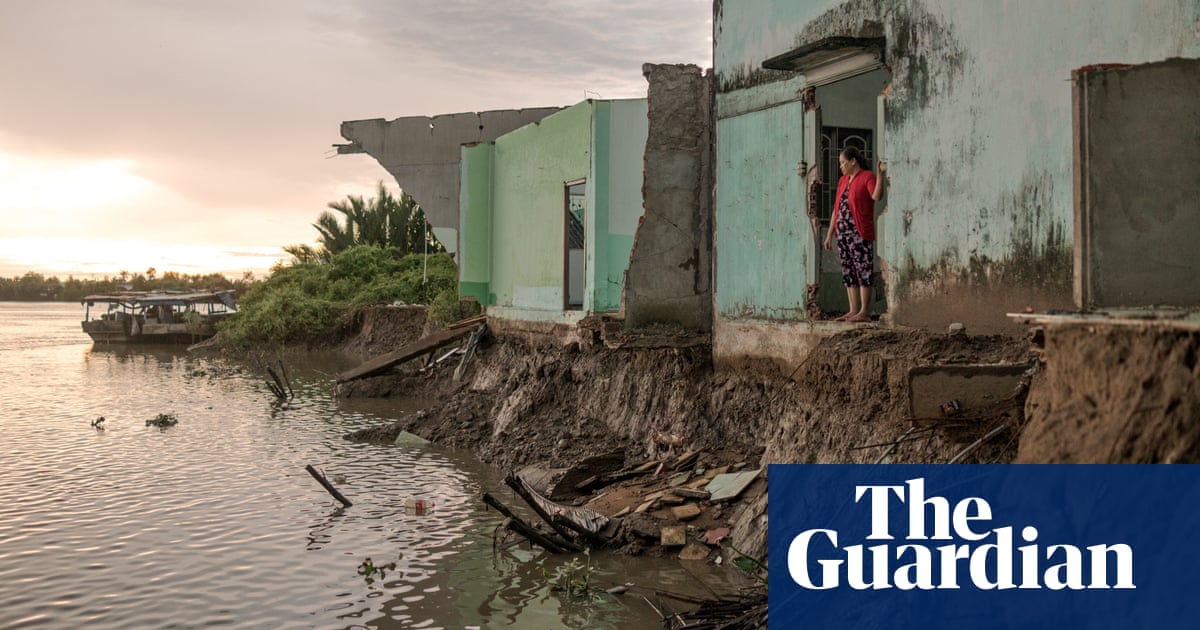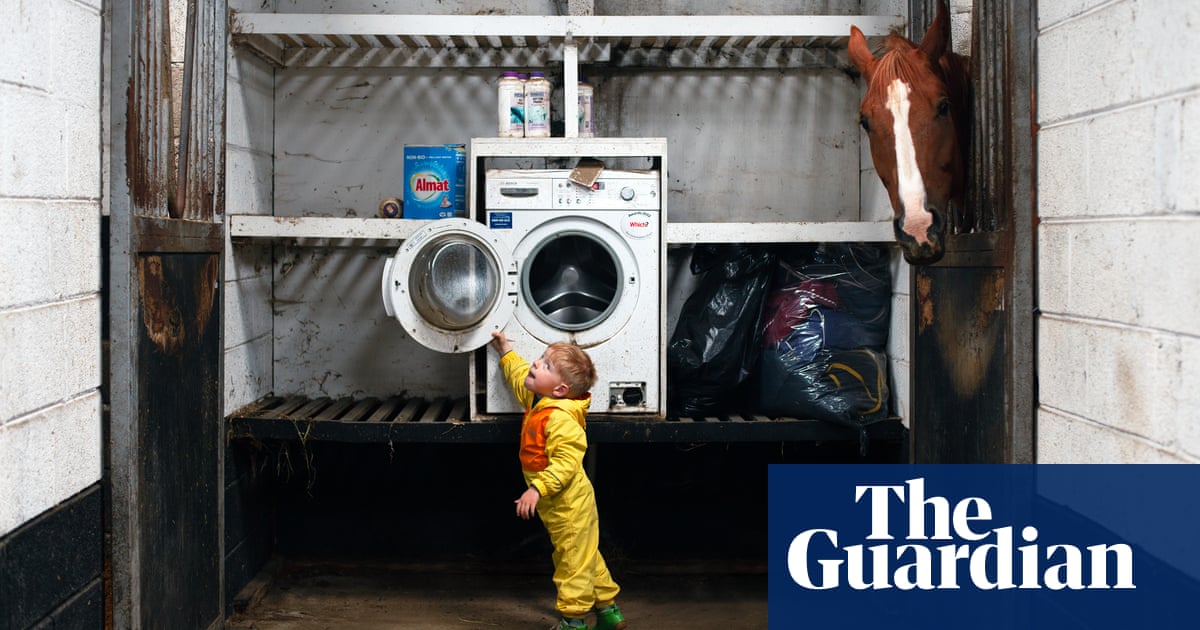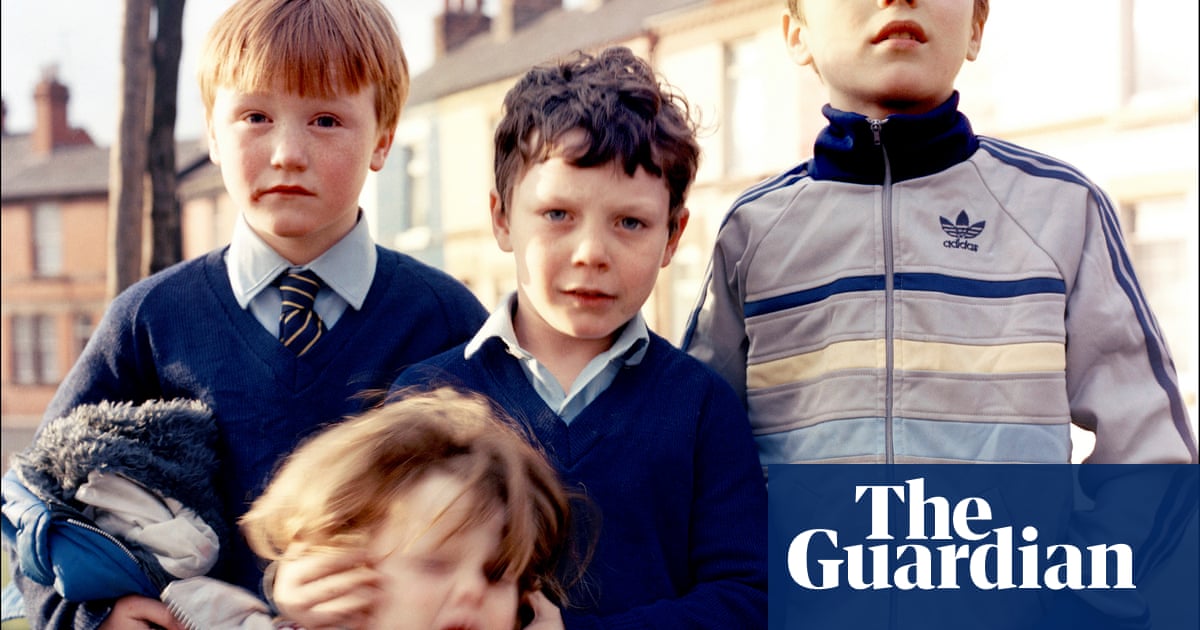
Ihad been to Belfast several times. I was a freelance photographer and all my work came from the Sunday Times ringing me up and saying: “Are you interested in going to such and such a place?” They would send me abroad for a couple of weeks with a pocket full of expenses and complete freedom. But I had married a woman from Northern Ireland so had a special interest in the area.
This was taken in August 1976 on a trip to Belfast with the writer David Blundy, who was later killed by a sniper in El Salvador. It was a horrendous week but it was a significant one, because the events – and this picture – helped start the peace movement.
On our first day, Sunday the 8th, there were riots in the street and I got some dramatic pictures of soldiers silhouetted against the barricades. On Monday, I was on the Falls Road, a well-known Republican area, and took a picture of children playing on the wreckage of a lorry that had been hijacked and burned.
Tuesday saw a really horrible incident. The army were chasing Provisional IRA volunteers who were driving a stolen car, and shot the driver, Daniel Lennon, killing him. The car went careering off the road into railings as a family were walking past. Anne Maguire and three of her children were crushed by the car. Two of the children died instantly; the third died in hospital the next day. I photographed the crash: the mashed-up pram and a baby’s bottle.
There were more incidents on Wednesday: burning vehicles, hijackings. On Thursday, the IRA held a funeral for Lennon, and the Maguire children’s funeral took place on the Friday. This photograph is of that, and their father. Thousands lined the procession route, both Catholics and Protestants. People were saying: “We can’t go on like this.” And that’s what started the peace movement.
Maguire’s sister, Mairead Corrigan, helped organise a peace rally of 10,000 women for the day after the funeral. The following year, Corrigan and Betty Williams, co-founders of the Peace People, were awarded the Nobel peace prize. In this picture, there’s a woman giving me quite a stare and I felt I was obviously intruding, but I had to get the pictures. There was no other way around it: I couldn’t do it from down the road or somewhere. And the photograph was important in driving the peace movement.
In those days, most photojournalists shot in black and white, but the Sunday Times and Observer magazines required colour, which added another aspect to this. The white coffin, the red flower on top, just gave it another edge. The very Irish-looking sky, very Irish-looking faces – as a documentary photographer, you have to record these things in such a way that the pictures tell the story. The test is: if you take the caption away, could you still get the gist?
Unlike with digital photography, you couldn’t spend your evenings looking over the pictures you’d taken, then send them to the picture desk at the touch of a button. I think it was better, less distracting. Blundy and I went to Elvis’s funeral in 1977, which was very weird, but we weren’t there long because I had to get the film to the airport and send it back by air freight.
We weren’t given any special training or protection for jobs like this, but the press were pretty well respected. The first time I was in Belfast, in 1972, we were shot at, but it was only because we were standing next to the army. There was an unfortunate schoolgirl walking behind who got a shot in the thigh. They said to me: “Get down!” You’ve never seen anyone get down so fast.
The biggest problem I found working on the streets of Belfast was getting stones thrown at you, because they could knock you out or kill you. I knew a BBC journalist who got hit on the side of the head, and he lost his hearing on one side. The army would be firing rubber bullets, too. We didn’t have helmets like they do now in dangerous situations. We just ducked.
The Republicans recognised very early on the value of having the press around. The loyalists were deeply suspicious but eventually did realise that journalists were important for images and telling people what was going on, and even for expressing their views.
Sometimes, little old ladies would offer you shelter. They’d come out of their houses and say: “Would you like a cup of tea, dear?” They were lonely and afraid. A lot of people were getting assassinated. You had undercover agents running around and informers. It was a vicious war.
See Alain Le Garsmeur’s work at galerieprints.com.
Alain Le Garsmeur’s CV
Born: 1943, France, then lived in Jersey, Channel Islands.
Trained: Ealing School of Photography, Ealing Tech. Then as an assistant for Donald Silverstein in England, and Guy Bourdin and Helmut Newton in Paris.
Influences: Guy Bourdin, William Eggleston and documentary film-maker Ken Burns.
High point: “Photo London 2021; and World Press award 1986 – first prize in the Daily Life section for a photo taken in China.”
Low point: “Realising that the editorial colour magazines I had worked for had become lifestyle and cookery mags.”
Top tip: “Keep a low profile whenever possible.”












